topknot
Topwater Transitions for Bass from Spring to Fall
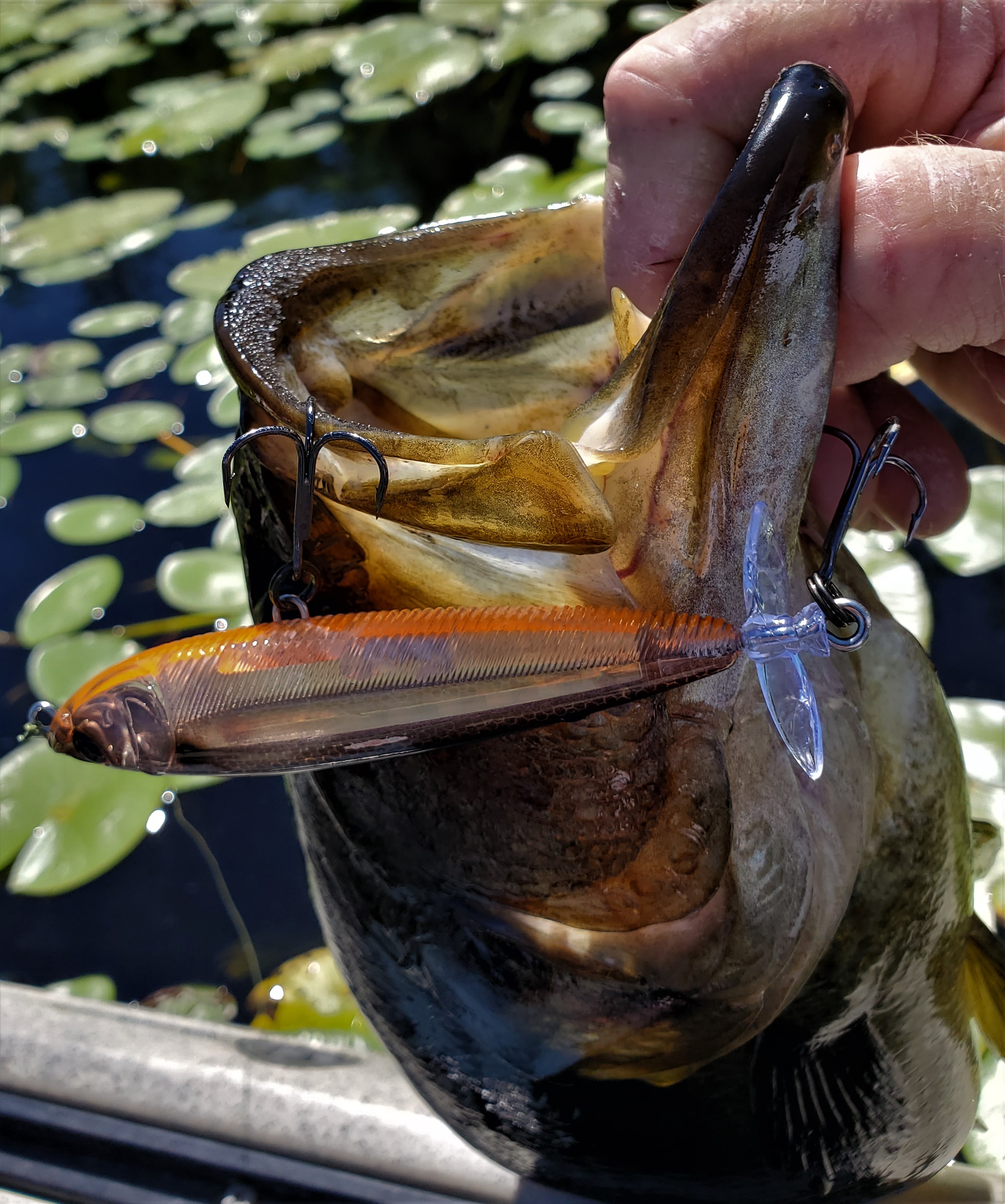 The changing of the seasons oftentimes makes it is necessary to modify fishing approaches in order improve fish catching opportunities. Like with any other lure type, changing up topwater presentations from spring through fall can lead to catching more bass as they shift their focus toward different types of prey and forage eaten with each of these seasons. Yo-Zuri hardbaits are a great option to consider for these necessary seasonal changes as they offer a host of different topwater lures and patterns to fit whatever situation with which the fish present us.
The changing of the seasons oftentimes makes it is necessary to modify fishing approaches in order improve fish catching opportunities. Like with any other lure type, changing up topwater presentations from spring through fall can lead to catching more bass as they shift their focus toward different types of prey and forage eaten with each of these seasons. Yo-Zuri hardbaits are a great option to consider for these necessary seasonal changes as they offer a host of different topwater lures and patterns to fit whatever situation with which the fish present us.
Spring
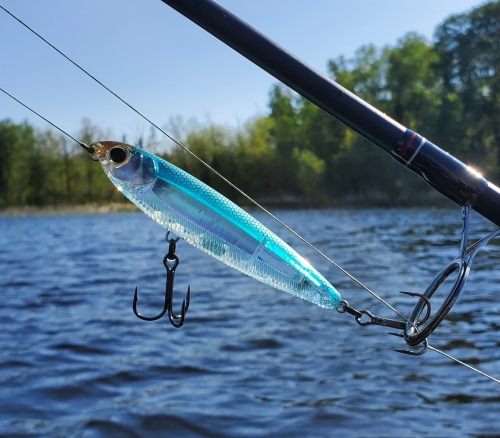
The Yo-Zuri 3DB Pencil is one of my favorite springtime lures as the fish are getting aggressive and ready to feed heavily after being hunkered down by several months of winter. These Pencils are big enough to get a fish’s attention as they prepare for the upcoming spawn, and they can be worked slow enough in the case that some fish might be more lethargic during cold front conditions. If the water and/or air temperature is lower than 50 degrees, I like going with a straight twitch and pause retrieve while using a 4” Pencil. Moving the lure 1-2’ at a time slowly forward and then pausing for up to 10 seconds can be highly effective. The pause is the key because that is when many fish will either strike or position themselves right under the lure to strike it when it starts moving again. After air and water temperatures supersede 50 degrees, then it is time to go with the classic “walk-the-dog” style retrieve where the lure moves from side to side while using a 5” Pencil. Warmer surface temperatures in spring can mean more and bigger minnows swimming in schools near the surface or in shallower bays, and when that happens, the aggressive nature of the side-to-side movement can elicit strikes because of predators already looking up and feeding on bigger active minnows.
Summer
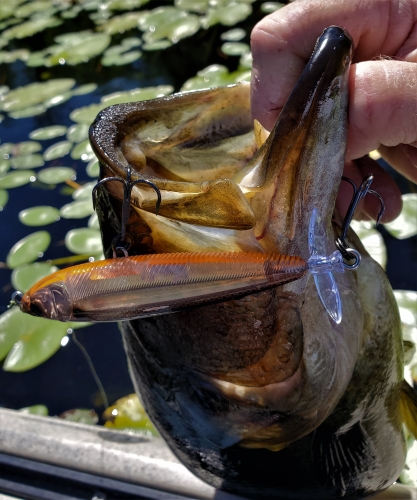
Once surface temperatures exceed the low 60s, we often see a significant increase in the amount of active bug life on the water. One specific insect that I look for during the summer months is dragonflies. When I see dragonflies, I switch from the Pencil to the Yo-Zuri 3DB Prop. The key to the Prop is that it has a plastic propeller which simulates the sound that a dragonfly makes when it is flapping its wings on top of the water. This lure can be used effectively from sunup to sundown, even when it is extremely sunny and calm, because of the presence of dragonflies. A general retrieve that I like to use is to cast the 3DB Prop parallel to emergent weeds that are adjacent to submergent vegetation and use a start-and-stop retrieve. I like to cast the lure, let it sit for 5-10 seconds so that fish can begin keying in on its silhouette right from the start of the cast, and then I go with anywhere from 1-4 cranks of the reel handle. The goal is to get the plastic prop to sound like a dragonfly’s wings flapping on the water, so sometimes reeling slower is necessary to make sure they can target the lure and eat it. Waiting to feel the fish’s weight during the strike will be paramount to improve the number of fish being hooked because simply going by sight might lead to pulling the lure away from the fish.
Fall
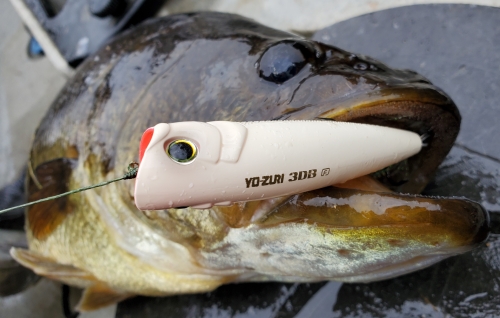
Fall is one of my favorite times of year to use topwaters as bass are hungry and feeding heavily in preparation for the upcoming long winter months ahead. The key to fall strategies for topwater lures is that I go by the first hard frost of the year versus when the calendar indicates the beginning of this season. Sometimes this happens in late August and sometimes it occurs in the at the end of September. My favorite way to pursue bass in the fall is with a Yo-Zuri 3DB Popper. I have found that using heavier line, like a 50 or even 65 lb braid, can be useful when tied directly to Poppers this time of year because I like to cast them right into any remaining emergent weed cover (even if it is dead due to frost) and retrieve it out over submergent weeds. Poppers work great in late fall as they offer a larger profile meal with little energy expenditure needed to chase them down. The Popper retrieve in fall is all about slowing things down and being patient. A cast usually entails letting the lure sit for up to 20 seconds or more after hitting the water, twitching the lure slowly 1-4 times so that it gurgles instead of splashes, and then pausing up to 20 seconds again. Using Poppers in late fall is often a case of the adage, “less is more,” when it comes to movement and noise on top of the water.
Being versatile with topwater hardbaits and adjusting the lure used based on the season can reap significant improvements in the numbers of fish that are landed. If you are looking for some exciting explosive bass action during the transitions from spring through fall, then casting an assortment of Yo-Zuri Pencils, Props, and Poppers is well worth your effort!
Mark Maule
Beginners Guide to Plug Fishing the Cape Cod Canal
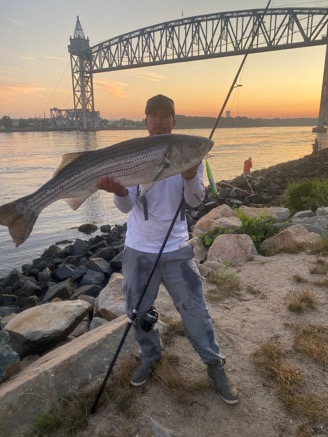 There is no better place in the world for consistently catching trophy sized Striped Bass from land than the Cape Cod Canal. The six-mile-long, man-made canal, is a land-based fisherman’s dream. There are multiple points of access, a sidewalk on each side of the canal for walking or biking and most important, boats are not allowed to fish in the canal! If you’ve never been to the canal before here are some tips to get you ready for your first trip.
There is no better place in the world for consistently catching trophy sized Striped Bass from land than the Cape Cod Canal. The six-mile-long, man-made canal, is a land-based fisherman’s dream. There are multiple points of access, a sidewalk on each side of the canal for walking or biking and most important, boats are not allowed to fish in the canal! If you’ve never been to the canal before here are some tips to get you ready for your first trip.
Timing
The key timeframe is the end of May through early September. The fish migrate from the south and quality size fish will arrive sometime around the end of May. Some fish will push through and continue north, while others will stay through the summer, taking advantage of the bait that stays in the canal. At the end of August and through early September there is a push of fish heading south, “when the cows come home”. If you are making a special trip to the canal the key is to line up your trip with the “breaking tides” during June, July or August. The breaking tides are negative (or double negative) low tides that occur at or around sunrise. These tides trap bait in the canal and offer Stripers the ability to ambush prey, particularly on the surface. The best tide chart to use is the Army Core tide chart – https://www.nae.usace.army.mil/Portals/74/docs/Recreation/CCC/Brochures/2020TideTables.pdf . The negative tides are marked with a * or ** for double negative. The sun rises in the summer sometime around 4:30-5am so plan on being there early to get a spot in the dark.
Planning your trip
Once you have identified the dates for your trip there are a few key things to book. First would be a location to stay. There are several local hotels and campgrounds in the area but my first choice is an Airbnb rental. If your lucky you can find a rental directly on the canal for an affordable price. One addition that I would highly recommend is renting a bicycle for riding the path along the canal. There are a couple local companies that rent bikes with rod holders and baskets for your gear, specifically for fishing the canal. Having a bike is key for maximizing your chances of being in the right place at the right time. Be sure to grab a rental vehicle large enough to carry your fishing gear and bicycles. A lot of the guys fishing the canal wear waders so they can wade out to cast and to make landing big easier. I personally prefer water proof boots and comfortable pants over the waders. That combination makes riding the bike much easier. Whatever your choice, make sure that you have water proof footwear. You can choose to wear spikes on your boots but I haven’t found that to be necessary for most areas on the canal, although you do need to be careful with your footing especially at low tide.

Tackle
The canal is a long-distance casting game and your gear needs to reflect that. I bring two rods (both 2 piece) for the canal:
1. 10-1/2 ft, 20-40lb class spinning rod, 1-4oz lures – This is the rod I use to throw swimming plugs or smaller topwaters.
2. 11ft, 30-60lb class spinning rod, 4-10oz lures – This is the rod I use to throw heavy swimbaits, heavy jigs and large topwaters.
On both rods I fish either a 200 or 250 size Van Staal but you can fish any comparable size spinning reel. The key is to not go overboard on line and leader size. On both rods I fish:
40lb Yo-Zuri SuperBraid – http://yo-zuri.com/category/superbraid/
40LB TopKnot Fluorocarbon – http://yo-zuri.com/category/topknot/
If you are doing heavy jigging you can step up your leader size but in almost all cases 40lb is fine. If you want extra distance on casting you can drop your braid down to 30lb but for me 40lb is perfect. There are a lot of people fishing the canal and therefore I like to us white braid because I can see it easily and keep track of where my line is compared to the other anglers. On my rods I fish a 75lb prime snap by Spro, that allows me to quickly switch lures without having to re-tie.
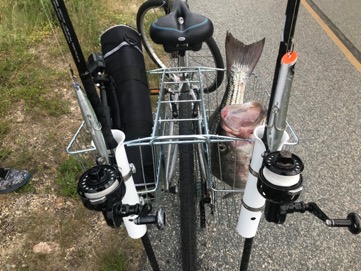
Lures
Lures for the canal can be broke down into three categories: Topwaters, swimming plugs and heavy jigs/swimbaits. I will be the first to say, I am not dialed in to the jig/swimbait bite and they are most effect after dark. I focus my attention on topwaters and swimming plugs. The key with any lure for the canal is distance. There are a couple key lures by Yo-Zuri that fit this fishery:
Topwaters
a. Yo-Zuri Surface Cruiser (6-1/2”) – http://www.yo-zuri.com/products/surface-cruiser-floating/
b. Yo-Zuri Mag Popper (5-1/4”) – http://www.yo-zuri.com/products/mag-popper/
Swimming Plugs
a. Yo-Zuri Hydro Minnow Long Cast (6-3/4”) – http://www.yo-zuri.com/products/hydro-minnow-lc/
b. Yo-Zuri Mag Darter (6-1/2”) – http://www.yo-zuri.com/products/mag-darter/
c. Yo-Zuri 3D Inshore Twitch Bait (5-1/4”) – http://www.yo-zuri.com/products/3d-inshore-twitchbait/
The Surface Cruiser has enough weight (2-1/2oz) and the stream lined shape to cast long distances but still floats, unlike many of the other topwaters thrown on the canal. That allows you to vary your retrieve while the other pencil poppers can only be fished fast or they sink. The Mag Popper, Mag Darter and Hydro Minnow LC have weight transfer systems to offer even greater casting distance, especially into the wind. That can make the difference between hooking up or just watching fish break outside your range. All of these plugs have 3X or 4X strength treble hooks and split rings that can handle bass up to 50 inches or more, even in the strong current of the canal.
The majority of the topwater lures thrown on the canal are pencil poppers, like the Surface Cruiser. However, a traditional style popper can be extremely effective as well. On my last trip I caught 20+ slot and schoolie size Stripers on the new Mag Popper. This is the best casting floating popper on the market period. It has a patented Magnetic Weight Transfer system that uses a sled that slams into the back of the bait during your cast and then locks back into place after landing. I fish the popper around slack tide and the first hour of the tide. I work it slower and more subtle for Striped Bass than I do for other species (Jacks, Tuna, Roosterfish). Letting it swing at the start of the tide, while working it slowly can be very effective. A big plus on the popper is it stays in the strike zone longer and many times you can hook up even if the fish misses the plug on the first strike.
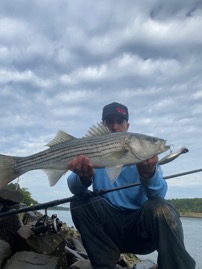
Personally, I reserve throwing topwater plugs until I see fish actively breaking on the surface. Some guys will throw them all morning but for me I put in on the secondary rod and grab it when the opportunity appears. For the most part I fish a swimming plug and 75% of time the swimming plug I throw is the Hydro Minnow LC. That plug casts very well because its stream lined, weights 1-3/4oz and has a weight transfer that keeps it from tumbling in the wind. It has the swimming action, shape and size that perfectly mirrors the tinker mackerel in the canal. It’s a plug that I can make long casts to breaking fish with or that I can catch fish up close to the rock because it stays in the water all the way back to you. I always have this plug tied on a rod when fishing the canal and I’ve caught some of my largest Stripers when they aren’t actively feeding on top.
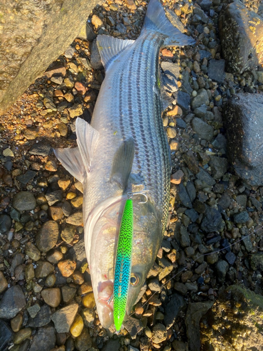
A new addition to fishing the canal for me is the Yo-Zuri 3D Inshore Twitch Bait. This is a slow sinking lipless twitch bait that can be fished with a straight retrieve or slowed down and fished with a twitch and pause retrieve. This bait has a different (deeper) profile and you can vary the retrieve to get finicky fish to eat. In this bait I tend to throw the Bone pattern or the Peanut Bunker pattern.
There are many colors that will work on the canal but the two main patterns for plugs are Green Mackerel and Bone. Mackerel are the key forage for Striped Bass in the canal. Other prey is available, including Squid, Herring and Bunker, but Mackerel is the bait that fuels this fishery. When picking colors for my plugs I make sure to have at least a couple of each plug in a mackerel pattern. In 2019 the regular Green Mackerel pattern was the hot ticket for me. In 2020 the new Wacky Mackerel pattern (combination of Green Mack and Bone) was the go-to color for the bigger fish. For topwater plugs, I will once again fish the Green Mack patterns but I would also suggest having a few in the Bone pattern and a couple in an all Yellow school bus pattern. When throwing to breaking fish having a solid color, that is easy for them to see can be important.
Strategy
Before I arrive, I research where the fish have been showing up on the canal. There are several forums, blogs and pod casts that report on the bite in the canal. I have personally had the most luck in the middle to west end of the canal. I will park at an access point close to where the fish have been and with the bike work that general area. The canal connects Buzzards Bay on the west end and Cape Cod Bay on the east end. Buzzards Bay is shallower than Cape Cod Bay and the water warms up faster. Therefore, most of the early season (May/June) fish tend to be caught on the middle to west end. One unique thing you will notice about the canal is the direction of the water and the tides are not lined up exactly. The water will change direction (from east to west or west to east) an hour before high tide and low tide. The key is to be in the right spot when the tide turns from west to east. I will typically be somewhere on the west end early in the morning and fish that location until the tide turns east towards Cape Cod Bay.
I am not a stationary fisherman. I grew up chasing fish down the beach or up and down the pier. So, when the tide turns east, I wait for a school of Striped Bass to push the mackerel through and I will jump on bike and follow them for several miles, picking away at fish as I go. I will catch a few, when they pass by, I jump on the bike and find an open spot farther east and repeat as I go. A lot of guys will won’t put in the effort to move, instead choosing to wait for the next school.
There are names for many of the famous spots along the canal and you can find a guide to that online. There are key spots like the Railroad track bridge, the radio tower and the state park on the east end that get larger crowds, but fish can be caught at any location along the canal.
Final thoughts
One of the best ways to get outfitted for EVERYTHING you need to fish the canal, including information on where the bite has been, is to go to Red Top Sporting Goods or Canal Bait & Tackle. These are well stocked stores and the employees fish the canal on a regular basis. They are a great place to pick up a two piece rod, reel, line and all the lures and terminal tackle you need. Check out these stores, including their great section of Yo-Zuri products.
Red Top Sporting Goods
www.redtopinc.com
Address: 265 Main St, Buzzards Bay, MA 02532
Phone: (508) 759-3371
Canal Bait & Tackle
www.canalbaitandtackle.com
Address: 101 Cranberry Hwy, Sagamore, MA 02561
Phone: (508) 833-2996
The last thing I will say on the canal fishery is if you do visit please pick up after yourself and follow the local fishery laws. This is a one of a kind fishery, let’s keep it great for future generations!
Weekends filled with Walleye in Canada!!! –André Gervais
Yo-Zuri hardbaits are the staple in every one of my tackle boxes. But, I especially rely on them when chasing after the big walleyes that we are notorious for in Canada. I really enjoy walleye fishing on the weekend because there are no two trips the same, and the walleye are very aggressive fish. It is always a great opportunity to hit the water and spend time with great fishing buddies and family.
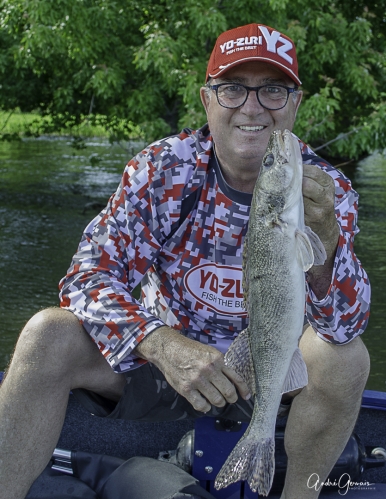
For most of my life I have known the best way to catch walleye is by trolling. This is a pretty simple technique done by boat: tie on a Yo-Zuri Crystal Minnow Walleye DD, throw the bait behind the boat and drive at a steady slow pace. A critical element to being successful and a common question I hear a lot is, “what speed should I troll at?” this is dependent on the bait you are throwing and the depths you want to target. For me I prefer a really slow speed to help the Yo-Zuri Crystal Minnow Walleye DD dive to a depth of 8-9 feet. This seems to be a perfect depth for this bait because it allows the bait to “dance”. When I say dance, I mean the bait is at a wide side-to-side wobbling action and is hunting!
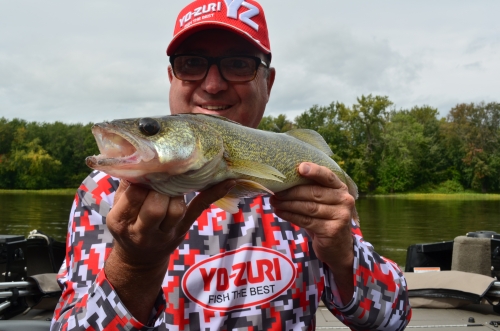
The rod and reel is really not too much of a concern to me, but I have found that line is very important; remember you are dealing with tooth critters. For me if I am fishing open water I will run straight 14-20lb Yo-Zuri TopKnot Mainline 100% Fluorocarbon. The small the line the deeper depths the bait will go. However, if I am targeting areas that have a lot grass or I am running multiple rods behind the boat I will usually run 30lb Green SuperBraid with fluorocarbon leaders. The braid helps stay more abrasion resistant in the grass.
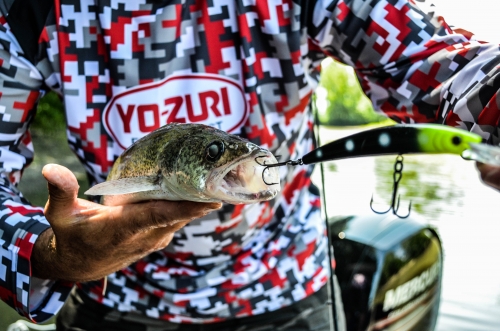
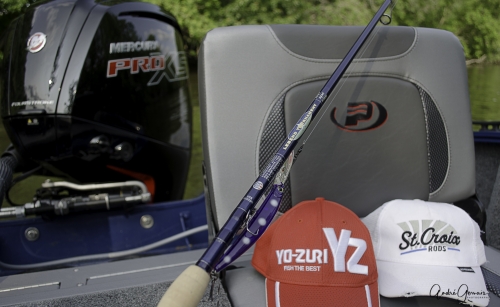
Finally the bait of choice, as I mentioned I throw the Yo-Zuri Crystal Minnow Walleye DD most of the time. This is a great bait because it dives really well, has a great action, and the colors are exactly what walleye target. Walleye prefer the really dark or the really bright colors. They are a weird fish when it comes to the color selection and resemble nothing of the natural forage. The colors I like the most are Zombie and Midnight, but will sometimes mix it up with Acid Perch and Hot Tiger. All of the colors offered by Yo-Zuri however are a great choice; these are just the ones I reach for most.
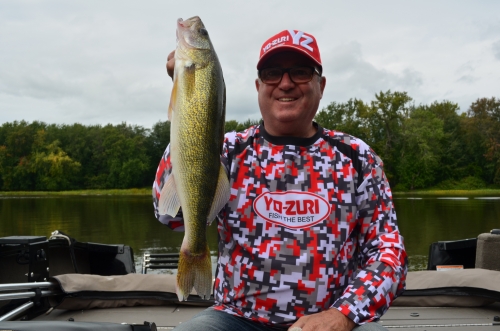
Enjoy the waters and don’t forget to bring home fresh walleye for dinner, as walleye are one of the best freshwater eating fish there is!
Chasin the Wester Stripers- by Joseph Tutelian
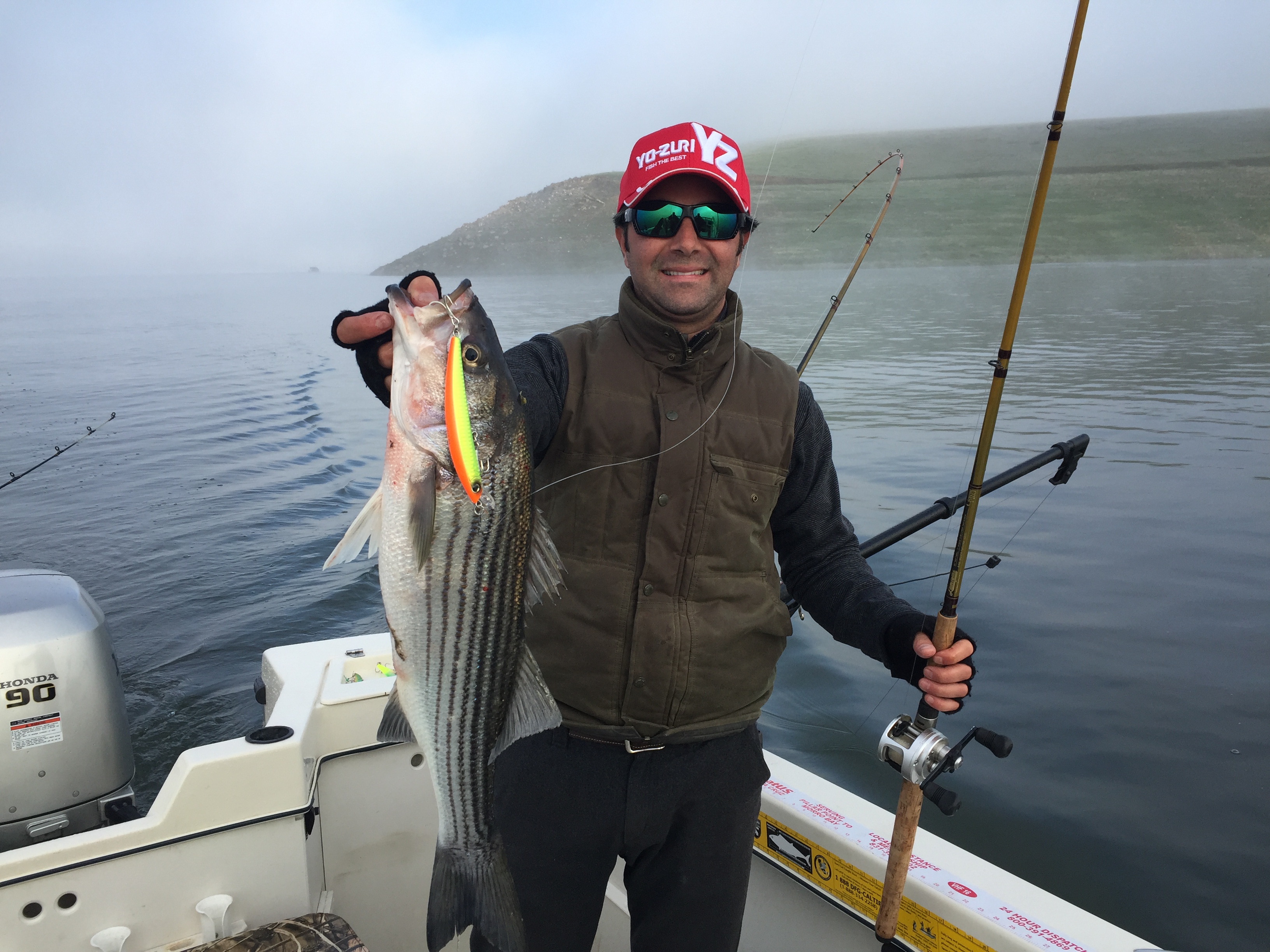
Rod: Cousins casting rod (SSW 79M-T) 7’9, 12-20 lb, extra fast tip; and Lamiglas Mark Wilson Striper Trolling rod (XCC 795) 7’9, 12-25 lb.
Reel: Diawa reel with a line counter when fishing with multiple people this helps coordinate each others distances behind the boat.
Fishing Line and Hardware: Yo-Zuri TopKnot Mainline fluorocarbon in 20lb test with a Owner 79 lb Hyper Crosslock Snap (a snap-swivel will rob the lure of its action)
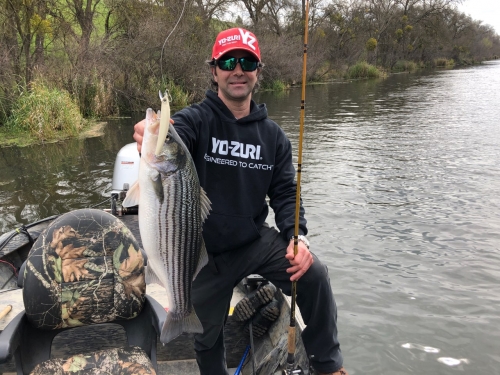
Lures: Yo-Zuri Crystal Minnow 5 1/4″ in bone white, pink, chartreuse, blue, and others. This lure has a very tight fast wiggle and dives a few feet deeper than the Yo-Zuri Hydro Minnow LC. The Hydro LC is just as effective as the Crystal Minnow, however I use the Hydro LC when trolling in shallower water because it dives from 3-6 feet deep depending on how far behind the boat you are trolling it (130 ft versus 200 ft.) The Hydro LC also has a larger profile than the Crystal Minnow; I like to downsize the lure when the bite is tough. In the Crystal Minnow I prefer the colors: Bone, Florescent Pink, and Chartreuse. The Hydro Minnow LC I always have the best luck on Bone or Purple Black.
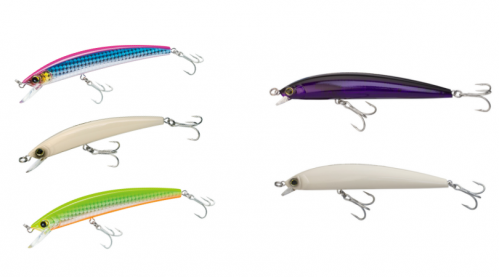
Fishing Technique/Application: Water in the river ranges from 48 degrees (winter/early spring) to 62 degrees (summer/fall, or further downriver). When I am fishing all of the above listed lures, I am trolling them upriver or downriver at speeds ranging from 2.5-3.5 mph, with my lure approximately 120-200 ft behind the boat depending on the depth of the hole I am trolling. Depending on what depth in the water column I am trying to fish, I will let out less line (i.e. 120 feet) to achieve a shallower depth, and more line (i.e. 200 feet) to achieve a deeper depth. Remember, you can also fish shallower or deeper in the water column by changing from the Crystal Minnow to the Hydro Minnow to the LC Minnow.
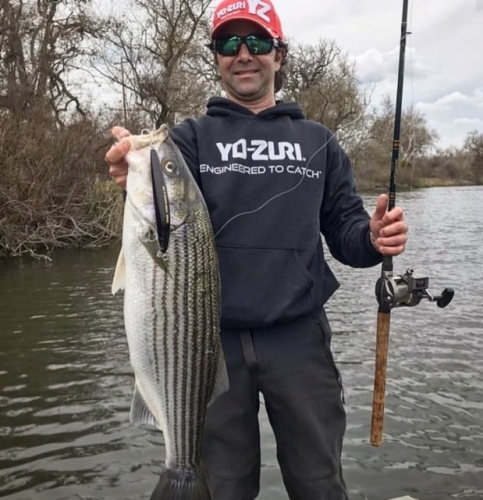
Another cool tip to note; to trigger reaction bites is to make the lures swim up or down in the water column by increasing or decreasing your troll speed. When using any floating lure, you can get it to swim down (or dive) by increasing your speed, and also get it to swim up by slowing down your troll speed. Sometimes doing this or trolling in a Z-pattern can trigger bites!!!
Walleye Season 2019 is FINALLY Here!!! by Marc Tremblay
This week marks the start of the 2019 Walleye season up north and we checked in with Yo-Zuri Prostaff angler Marc Tremblay in how he attacks early season.
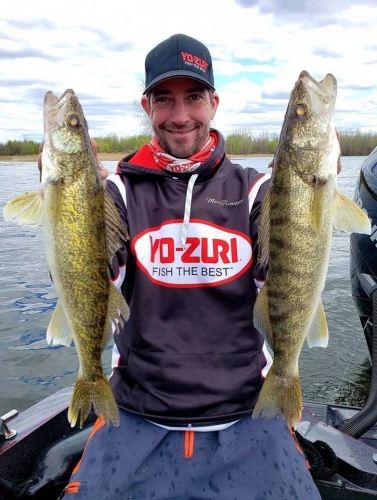
Primary Technique: Yo-Zuri Crystal Minnow Walleye DD
Marc always starts with when early season walleye fishing is trolling a Yo-Zuri Crystal Minnow Walleye Deep Diver in a shallow area (rock structure-weed line-edge of pool)

“I try to put the bait very close to the bottom. The fish are often relating to a rocky bottom because the the most heat will be held here. Typically if I am not hitting the bottom then I am not in good position to get bit”, says Marc.
The trolling speed in cold water is around 0.8 and 1.2mph, this allows the Crystal Minnow Walleye DD to have great action while not being too fast. The walleye are cold and lazy after the ice melt and may not seem as aggressive as they will be in a month.
Marc prefers a seven foot trolling rod medium heavy extra fast action. This rod also the bait to work the best action and is not too stiff whenever a walleye bites.
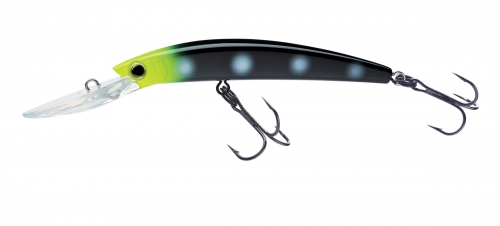
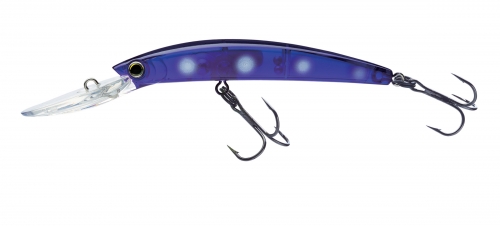
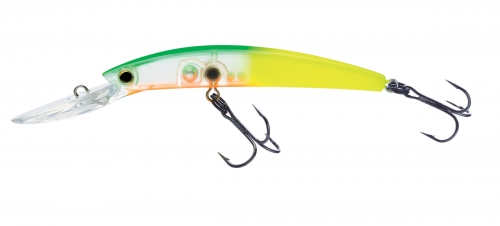
“I use Yo-Zuri SuperBraid 20 pound. I prefer the smaller diameter to help the lure to go to the bottom faster and less restriction. I also tie on a 6 foot Yo-Zuri TopKnot Mainline fluorocarbon leader. My method to the madness is simple: Dark color in cloudy water (Zombie, Midnight) and light color for a sunny day.”
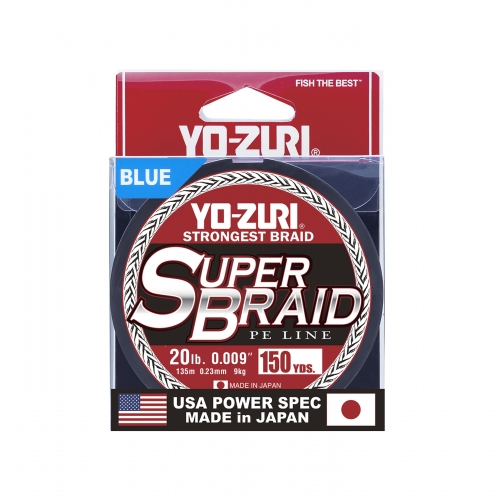

Secondary Technique: Jigging a Rattl’N Vibe
Marc mostly uses conventional jig equipment with a Yo-Zuri Vibe, preferably the 1/2oz size.
“I prefer this technique when fishing around a lot of current. The tight wobble and loud sound of the Vibe seems to really make a difference. I use a 6 foot heavy jigging rod with 10 pound SuperBraid mainline and 8 pound HD Carbon leader.”

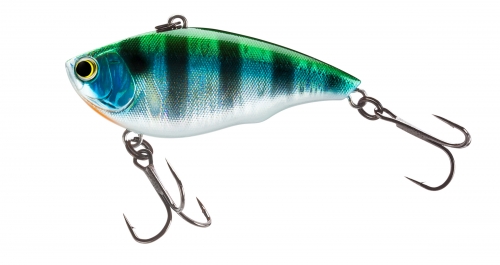
Marc says for the best action to use the bait without a clip and try to fish in areas where there is a discrepancy in the current. Finding a small calm current break can be the most successful. The walleye this time of year again are lazy and would rather find areas in current where the bait will naturally appear in their face without having to chase it down. This also means not being afraid to make multiple casts.
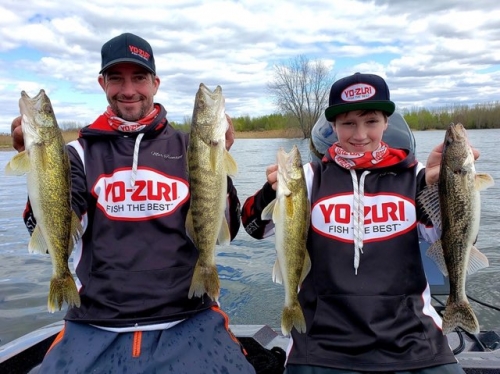
Yo-Zuri Prostaff angler Brandon Cobb Captures his first W
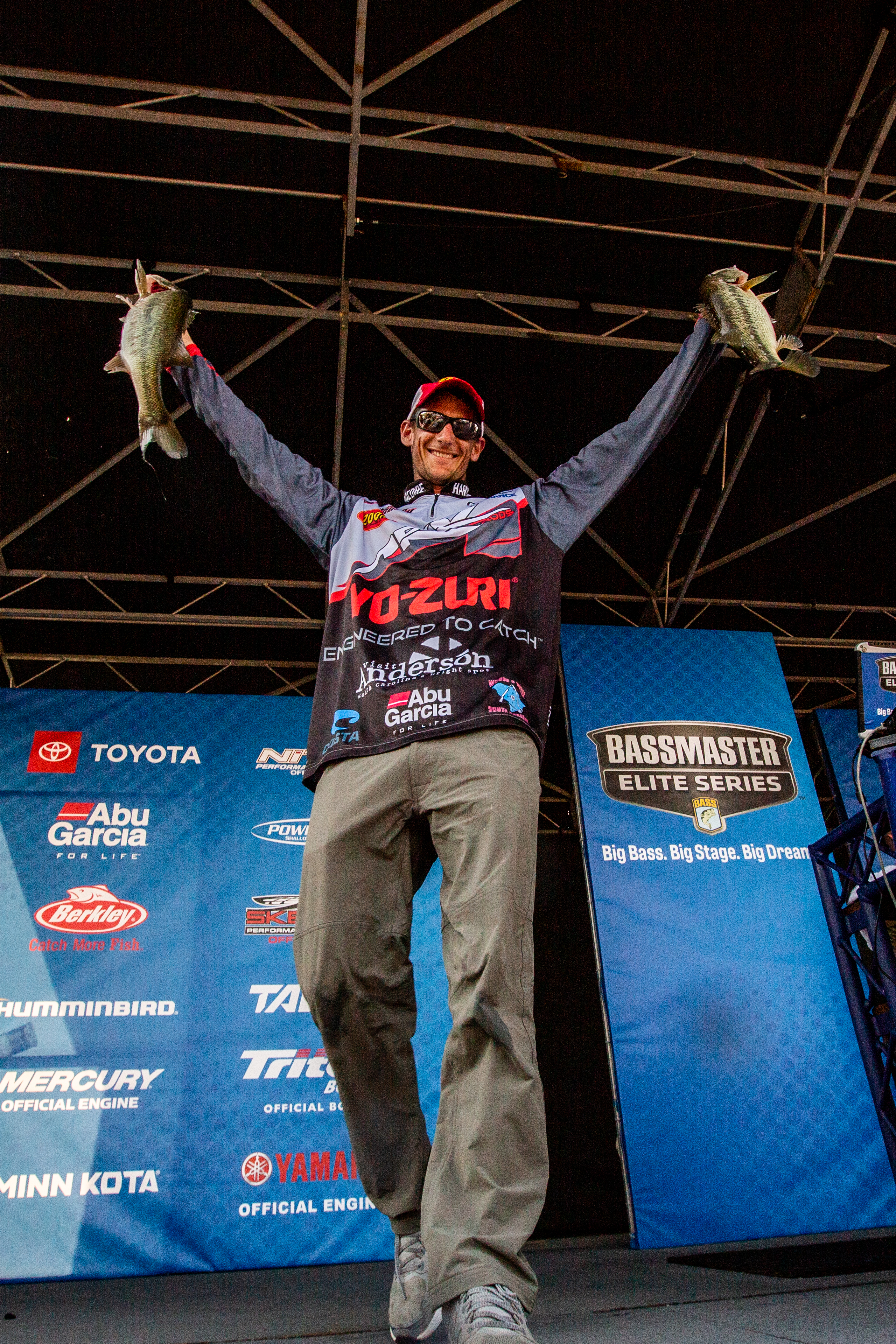 Fishing as a professional bass fisherman comes with a lot at stake. It can be financially trying, emotionally exhausting, physically demanding, but can all pay off when the plan comes together. Every angler out there has one goal in mind; to WIN! But what if you are in front of your hometown crowd? The people that saw you grow-up, the friends you’ve known your whole life, your wife, your parents and grandparents, all your family, what if you were the angler everyone had their eye on through-out the week? Does the stakes of winning get higher? Is there more added stress? Do you expect more from yourself? Well that was exactly the cards dealt to Yo-Zuri Prostaff angler Brandon Cobb last week on Lake Hartwell for the Bassmaster Elites Series event in South Carolina.
Fishing as a professional bass fisherman comes with a lot at stake. It can be financially trying, emotionally exhausting, physically demanding, but can all pay off when the plan comes together. Every angler out there has one goal in mind; to WIN! But what if you are in front of your hometown crowd? The people that saw you grow-up, the friends you’ve known your whole life, your wife, your parents and grandparents, all your family, what if you were the angler everyone had their eye on through-out the week? Does the stakes of winning get higher? Is there more added stress? Do you expect more from yourself? Well that was exactly the cards dealt to Yo-Zuri Prostaff angler Brandon Cobb last week on Lake Hartwell for the Bassmaster Elites Series event in South Carolina.
How did Brandon do? He never even flinched and got the job done; winning his first Bassmaster Elite Series event in his career and taking home a $100,000 payday.
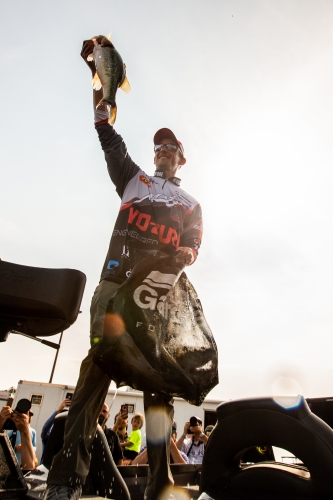
Brandon grew up in South Carolina and has fished Lake Hartwell his whole life, so knowing the lake was no problem. Making sure he didn’t let history interfere with his ability to fish clean and strong to capture the win; that was the difficult task. The Yo-Zuri pro knew he needed to stick to one area of the lake that was notorious for big bedding fish. He stuck to his plan and stayed calm.
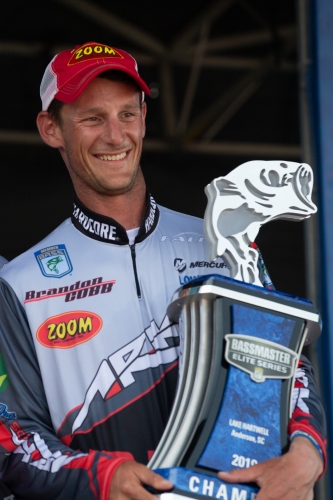
Brandon is a well-known angler that prefers to burn the bank and cover as much water as he could throwing moving baits. But, when the springtime hits and water is clear; the best way to catch them is with a spinning rod. Brandon threw a wacky worm throughout the tournament but still managed to cover as much fishable water as he could, even at times revisiting areas through-out the tournament days as fish continued to move up in his primary areas.
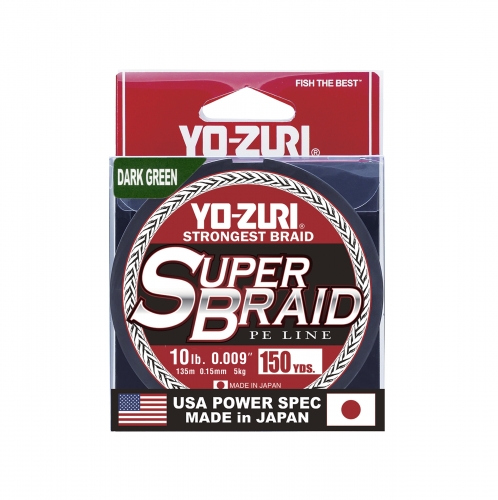
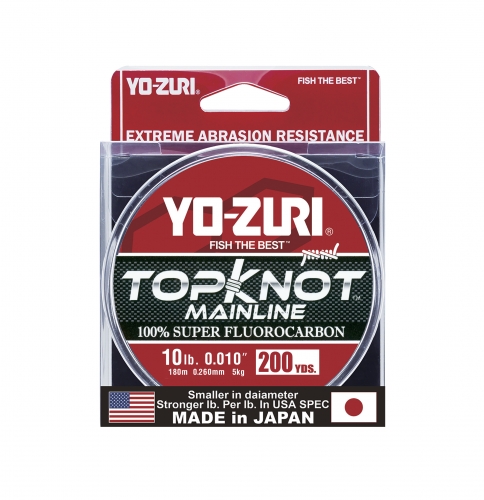
Brandon’s arsenal of attack was a 6’10 medium action spinning rod, 2500 size spinning reel, Yo-Zuri 10lb SuperBraid with a 10lb Yo-Zuri Topknot Fluorocarbon leader. Brandon was using this set up to throw a wacky worm to make long casts and catch cruising largemouth in bedding areas. Occasionally he would slow down and throw a shaky head for fish that were locked onto a bed, but most of the fish he weighed in were cruising shallow.
Braxton Setzer is Runner-Up at Seminole!!!
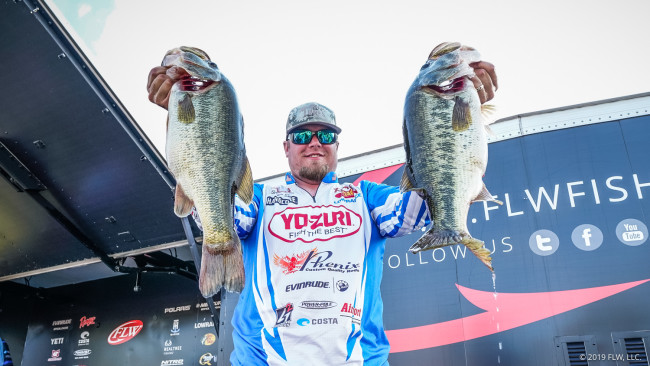
The FLW Tour held their third stop of the 2019 season this past weekend on Lake Seminole in Georgia. Among the angler’s that made a strong fight for the win was Yo-Zuri Prostaff angler Braxton Setzer. In what was one of the most electrifying final day performances, followed by a very emotional final day weigh-in, when the smoke cleared Braxton achieved his best finish on the FLW Tour.
“Second Place is not that bad at all, although it does sting, it was not my time and now I really feel like my time is coming,” says the 31 year old angler competing in his fourth year on the FLW Tour. “Practice was terrible on me as with the rest of the field, everyone was talking about how tough the fishing was during the meeting. If you told me I would have finished second I probably would have laughed at you”.
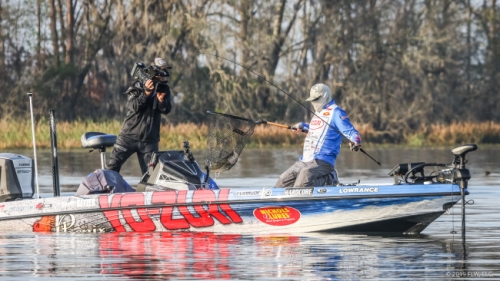
Braxton had very little confidence after practice and it took slowing down with a worm and swimbait to get those key bites during the tournament. In the grass were little highways and that is eventually what Braxton knew he found with locating a clean spot where he was catching his fish. The fish seemed to be suspended in 10 feet of water where the water was 12 feet deep.
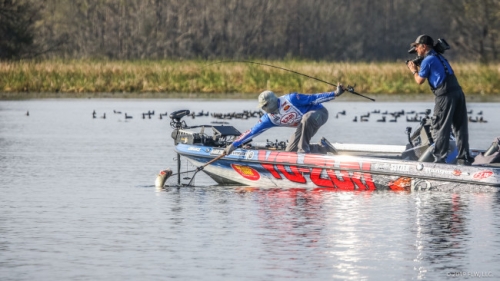
“During practice I was looking for flat areas that had a healthy amount of grass in it leading into spawning areas. The lake had just experience a cold front during the early part of the week and I felt like as the week went on it would get better,” reported Braxton. “The area where I caught 25lbs the first day and 23lbs the second I actually found casting around a Yo-Zuri 3/8oz Vibe. I got a bit with a keeper fish and then scanned around using my electronics and was able to locate a clean spot within the grass and I knew the transition would be useful throughout the tournament. It is also the only place I had confidence in.”
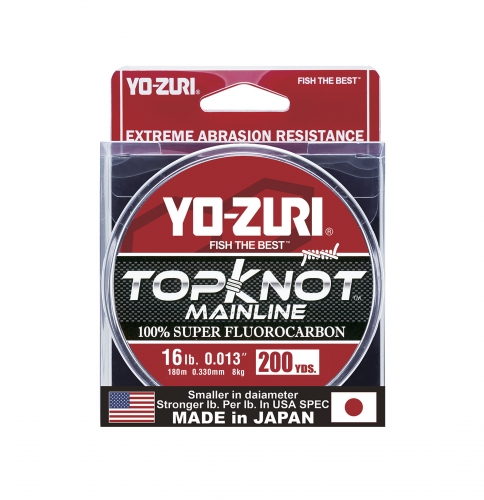
That magical spot really did pay off for Braxton, but it took all the way until the final day of the tournament to key in the exact presentation and cast.
“It really was a fun tournament and I am still in shock that I was able to crack the top-5. Definitely another key to my success was Yo-Zuri TopKnot fluorocarbon. I hardly had to retie all week never broke a fish off. One thing I will add about using the fluorocarbon that most anglers don’t do; I never change my line out every day of fishing. I’ve never had an issue with using the line multiple tournament days and multiple events. The line really holds up and is the quality anglers are demanding, for me it is dependent on my career.”
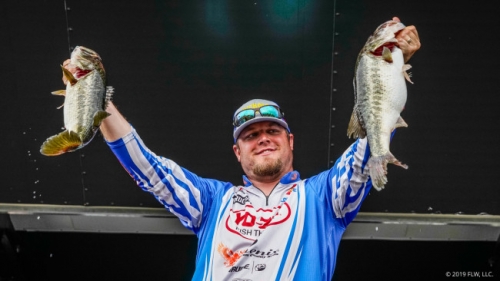
“Sometimes, you just have to go fishing”- by Bassmaster Elite Series angler Clent Davis
Clent Davis, a native to Alabama and one of the original grassroots anglers to the college fishing program, found himself doing a lot of soul searching leading into the 2018 season. Coming off a couple rough patch years and redirecting his focus to the FLW Tour, he simply “had to just go fishing again.” Fast-forward to August 12th, 2018; Clent’s career took a 360° turn when he posted the biggest come back in FLW history to become the 2018 Forrest Wood Cup Champion. Joined by his wife, daughter, and mom on stage in Hot Springs, Arkansas; Clent looked like a little kid again on the playground without a worry in the world. Fast-forward to February 2019, Clent has accepted a new opportunity with the Bassmaster Elite Series and his accomplishments are still piling up.
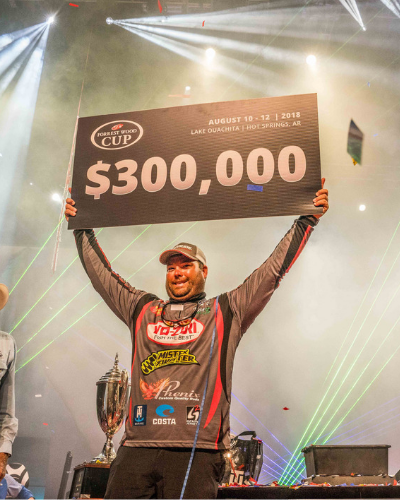
“Coming back to the Elite Series was definitely a decision that was hard to make. With the support of my family, friends, and sponsors I felt like I was making a conscious decision,” says Clent. “The first tournament in Florida kept my reputation in Florida the same ‘terrible’ but coming to Lake Lanier I knew I could put together a great opportunity.”
In practice he found himself struggling again to establish a pattern to go with. Not having a definitive game plan in place, he put 20 rods on the deck and went junk fishing.
“I knew I could catch some fish off docks, and I had some areas I felt confident in. But I couldn’t tell you how I was going to do it or where I was going to finish.”
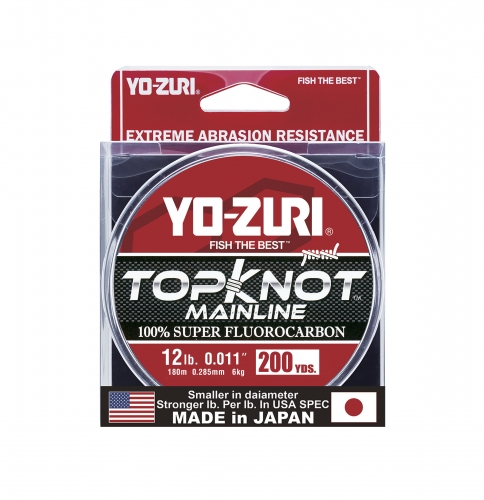
Lake Lanier is a renowned spotted bass fishery, probably on the bucket list of many anglers out there as it should be. Multiple top level tournaments and championships have been held on the lake over the years. It is also where some of the best drop shotting anglers and spotted bass anglers cut their teeth learning everything they did. However, putting a mixture of all the new swimbait and finesse techniques that are popular today; it is almost like taking a knife to a gun fight. But no one out there is going to back down from the challenge, especially Clent Davis.
“Even with all the rods on my deck, I weighed in most of my fish on the Hardcore Flat Minnow 110 and then using a finesse technique. Without a doubt the best technique I had going for me was throwing the jerkbait around docks. I really didn’t think it was going to pan out however, because the weather did not cooperate the way I had hoped.”
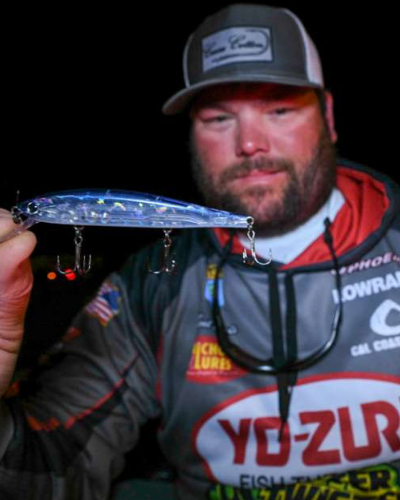
photocredit: Bassmaster.com
The element that played the most into Clent’s favor is consistency. The first day many of the anglers really caught them, but day 2 and into the weekend things changed. Clent was able to stay consistent and put together strong enough weight to post his first Top-10 finish of the 2019 season on the Bassmaster Elite Series. He spent most of his time covering as many docks as he could throughout most of the four days in the tournament throwing the jerkbait. His set up included:
-7’1’’ Phenix Feather ML rod
-6.4:1 Shimano Curado K reel
-12lb Yo-Zuri TopKnot Mainline 100% Fluorocarbon
-Hardcore Flat Minnow 110 (Ghost Pro Blue)
“It feels really good to keep the ball rolling that I got on at the Cup. I spent a lot of time in the off season with my family and in the deer woods. That gave me a break and allowed me to be comfortable going into 2019. I am happy to have gotten my first top-10 early on in the season. Hopefully this will propel me into the remainder and lead me straight into the Bassmaster Classic.”
FLW Tour Lake Toho Top-20 Finish Recap- by Mike Surman
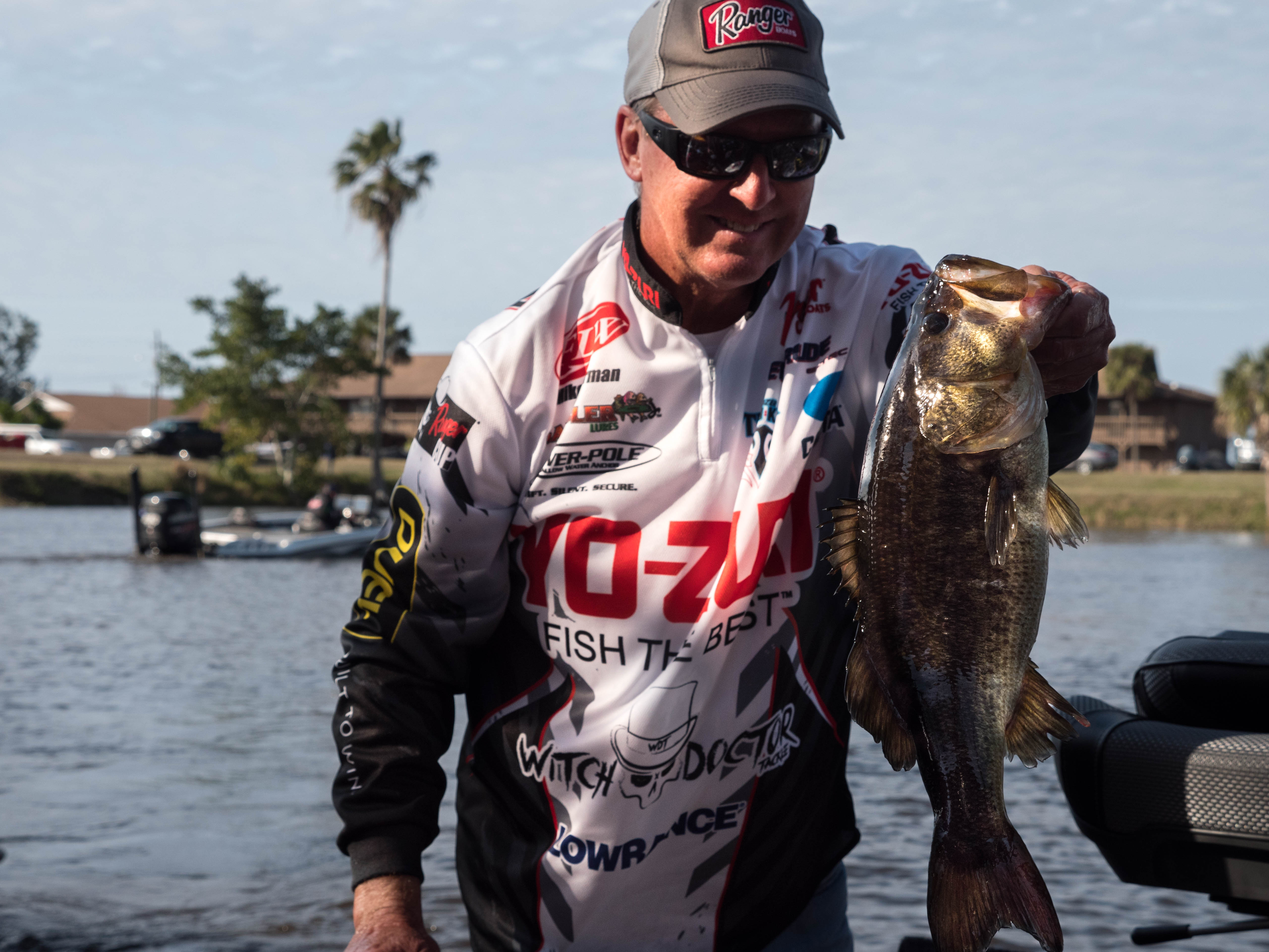 The older I get in this sport the more a good finish means to me. With the changing technology, industry curves, and constant new talent making their way into the tour level; the harder it is for me compete against fellow anglers. However this past weekend in my current home state of Florida at Lake Toho, Mickey Mouse must have given me a little magic being so close to Disney World because everything came together.
The older I get in this sport the more a good finish means to me. With the changing technology, industry curves, and constant new talent making their way into the tour level; the harder it is for me compete against fellow anglers. However this past weekend in my current home state of Florida at Lake Toho, Mickey Mouse must have given me a little magic being so close to Disney World because everything came together.
The fishing in Florida has been really off so far this year. Between the low water in all the lakes, the Red Tide issues the entire state faced last year, and it still being early in the year the best fishing is still yet to come. This last week I was really able to pinpoint a good amount of fish that were pre-spawning and spawning. I used my local knowledge of the lake to lock into Lake Kissimmee and fish staging areas leading into spawning areas with good, healthy grass around it. With water temperatures in the mid-60s I knew as the week processed the fish would continue to move up.
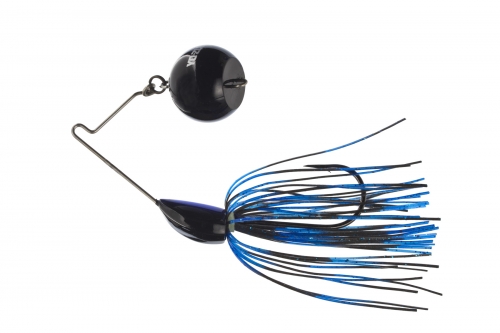
In practice I was really able to capitalize on a morning pattern and then an afternoon pattern, a key to my success knowing I could stay calm throughout the day and capitalize on the different patterns when they were at their best. In the mornings I was catching fishing on a 1/4oz Black and Blue 3DB Knucklebait with a soft plastic swimbait trailer. I was able to catch a couple really good fish on this and thought it would be a key bait for me throughout the tournament. I was throwing the Knucklebait over submerged grass around staging areas. As the afternoon took place and the sun got high I was able to pitch to hydrilla mats and dollar pads with a soft plastic stickworm catching spawning fish.
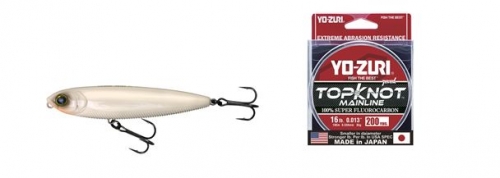
In the tournament, the morning Knucklebait bite had died but I was still able to capitalize catching these same fish using a 3DB Pencil in Bone color. For this technique I was throwing 20lb Yo-Zuri Hybrid line, and I was making short casts with it. I think the bait has better action when making shorter casts and not having so much stretch in the line. In the afternoons I was able to again capitalize again on the plastic stickworm bite. I was fishing the worm on a little [1/16oz] weight and throwing it on 16lb Yo-Zuri TopKnot Mainline Fluorocarbon.
One of the last factors that helped me was covering water in an area. I was fishing a massive area of Lake Kissimmee and it seemed like covering water and then breaking down an area once I got a bite was the key to capitalizing on water holding fish.
Yo-Zuri prostaff Todd Woods takes the “W” at WON Lake Havasu Open!!!!!
It was by far 3 of the best winter days of fishing for me at Arizona’s Lake Havasu. My practice started out pretty rough. My first day was spent in the river around the I-40 Bridge looking for smallmouth bass in the current. After a full day of practice I had only 4 bites; 2 largemouth and 2 smallmouth throwing a HARDCORE Twitch’ N Glide to locate fish. The fish will follow the swimbait and I would mark a waypoint on my Lowrance HDS unit.
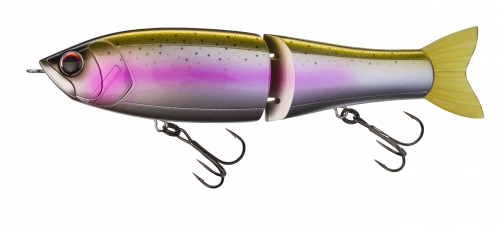
The second day of practice consisted of the Lower part of the river with zero bites and a school of 6 largemouth I found hanging around a letdown tree in 4 foot of water. The 3rd day of practice was spent in the main lake. I was targeting Rock, Grass and bait. But after a week of cold temps below freezing and dropping water temps of 47 degrees the bait was very difficult to locate. I managed 6 fish on a small Swimbait and a HARDCORE CRANK 4+ in Baby Bluegill pattern.
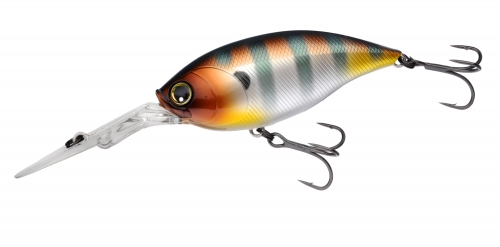
The air temps started to get warmer and day 4 the water temp was 50 degrees. I had a feeling that the bass would start moving shallower. So I started looking for Mud Hens (Black Birds with white beets). The birds feed on grass and if the cove had more than five bits in it I know there was bass and grass close by. I was using a HARDCORE VIBE 70S Baby Bluegill color, working it slowly ripping it through the sparse grass. At around noon on the final day of practice I decided to fish one of the popular Marinas on the main Lake. It too had Mud Hens there so I knew there was grass. Around the 5 casts in the marina on the VIBE I caught a 5 pounder that absolutely choked the VIBE. I had to cut the hooks from the inside of the gills to keep from severely injuring the fish. A couple cast later I caught a 2 pounder on the same bait. I immediately left the marina and continued my practice.
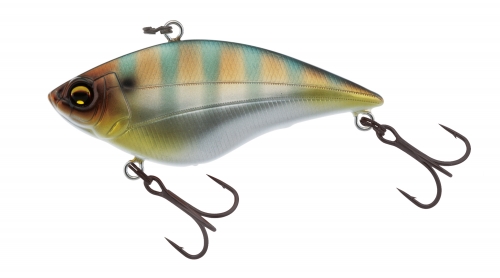
Moving further south down the lake I found a few fish on the 4+ Crank in the main lake on the edge of some grass in 10 foot of water. That day I had a total of 5 fish. The next day was somewhat of a day off. I was able to fish till noon but never got a bite or a follow from a bass.
I have over 30 years of fishing Lake Havasu and I knew it was going to be a tough 3 days of fishing. My best estimation was winning weight 46 pounds. Not much “dock talk” other than tough fishing. My roommate was averaging 2 bites a day.
The tournament was shared weight. The day before the first day I drew a guy from Arizona and he was eager to know what to tie on. I gave him a 1/2 ounce bladed jig. I elected to start day 1 in the marina. After about an hour I started catching fish. I was throwing the Vibe between the boat docks ripping the bait through the grass. I caught 4 fish from 2-4 lbs. My co-angler then caught a 7.75 Largemouth to boost our weight. A few cast later he caught a 5 pounder. We ended up catching 12 fish with the largest 5 weighing in at 23.70, leading the tournament by over 5 pounds.
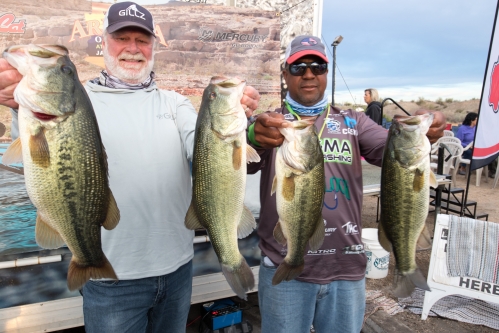
Day 2 I decided to give the marina the day off hoping to manage my fish to make it 3 days. I fished the main lake and southern area with small swimbaits and crankbaits. I caught 2 fish early on the 5 inch Basstrix Swimbait in Hitch color on a 1/2 ounce Bladerunner Spintrix head. I later caught fish number 3 running south on a HARDCORE 4+ Baby Bluegill Crankbait. With a 4:15 weigh-in and only 3 fish with an hour left of fishing I was wondering if I had made the right decision to not fish the marina. At 3:15 I pulled into one of my favorite pre-spawn coves and began to throw my swimbait around some submerged habitat. My co-angler noticed a Grebe diving and coming up with a threadfin shad on the surface. I worked my way to the area where the grebe was feeding on shad and also had several coots in the area feeding on grass. I made a cast a caught a 4 pound+ largemouth. A few cast later I caught a 2 and 1/2 pounder to fill out limit for 17 pounds.
The third and final day was spent entirely on the above mentioned marina. I started the morning with a 4 pounder and never looked back from there. I caught a bass on every other row of docks. I caught 8 fish on the bladed jig and ended up with over 21 pounds. It was the second largest bag of day 3 and I won by over 5 pounds.
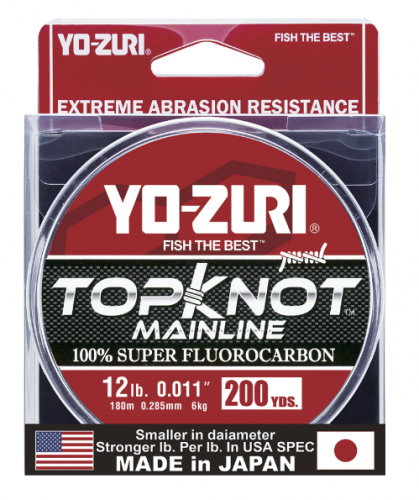
The key to my success was locating bait, grass and fishing the baits slowly ripping them through the grass. I was using 14 lb Yo-Zuri Top-Knot 100% Fluorocarbon. Saving those fish the second day was also a key to victory.
